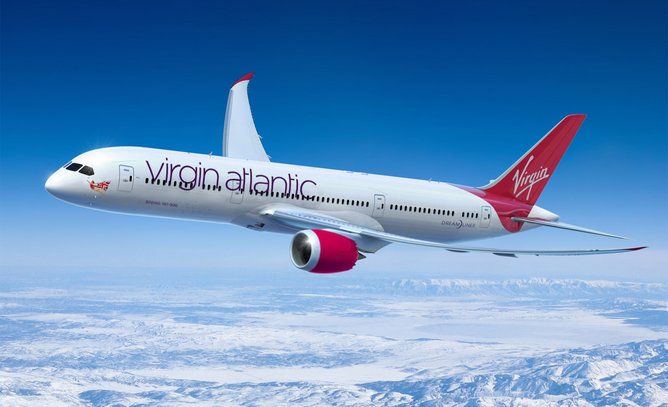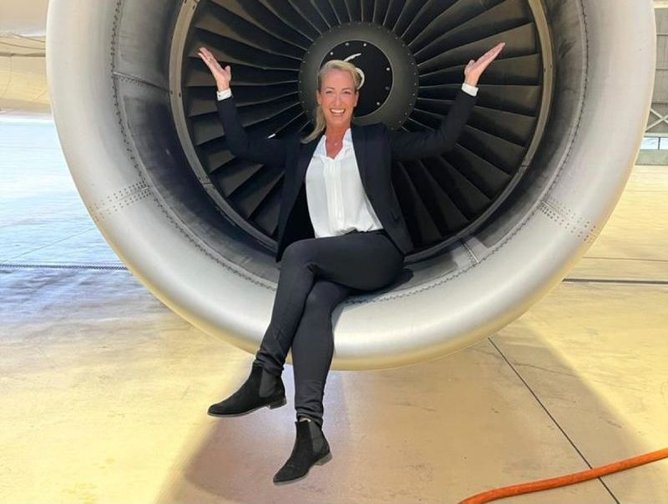Why Carbon Removal is Critical to Reaching Net-Zero Aviation

There is no doubting the role aviation plays in climate change.
In 2022, the industry accounted for 2% of global energy-related CO2 emissions, growing faster in recent decades than rail, road or shipping.
And with international travel demand back to pre-pandemic levels, the urgency for the industry to decarbonise has never been greater.
From airlines to aircraft manufacturers, the aviation industry has pledged to achieve net-zero flying by 2050 (IATA member airlines approved this resolution in 2021).
But reaching that goal is complex with few viable options currently available.
Among actions being taken to decarbonise – airlines are updating their fleet with newer aircraft, engaging in operational efficiency, introducing electric- and hydrogen-powered aircraft, and exploring disruptive propulsion technologies, carbon offsetting and sustainable aviation fuel (SAF).
Last year, Virgin Atlantic completed a 100% SAF transatlantic flight, becoming the first worldwide to operate a commercial flight on waste-based fuel. Other airlines are blending SAF into flights.
But SAF is far from a magic bullet, as it is costly and has not been adopted at scale. Similarly, airlines like American Airlines are investing in hydrogen as an alternative fuel – but like SAF, the technology won’t be commercially viable for years to come.
While committing to long-term decarbonisation solutions such as SAF and hydrogen-powered planes, major airlines are increasingly looking to carbon capture and removal technologies as complementary instruments in their sustainability strategies.
One of the newest and fastest-growing weapons in the fight against global warming, the technology to remove carbon dioxide from the atmosphere is being seen as the only viable option to reach net-zero 2050 goals.
“Without carbon removal, net zero is out of reach,” David Webb, Chief Sustainability Officer at BCG said, adding that this is true across industries at large.
Similar to an offset credit, companies make investments in the technology and receive credit for their CO2 emissions in return.

What is carbon capture and removal technology?
Originating in the 1970s but never fully scaled up, carbon capture refers to CO2 emissions being captured at source, compressed, and then transported to a deep underground storage location.
Though still in its infancy, Direct Air Carbon Capture and Storage (DACCS) technology is seen as the Gold Standard of carbon capture.
It works by capturing CO2 directly out of the air – using giant fans to filter CO2 from the air and store it permanently, not dissimilar to sucking CO2 out of the atmosphere.
DACCS is a growing business, and governments and associations around the world are increasingly in support of it – providing tax incentives and grants to propel the industry forward.
Among the first companies to ‘capture’ the Direct Air Carbon Capture movement were Climeworks and Carbon Capture, with the former backed by big companies like BCG, Accenture, Stripe, H&M, Microsoft, Swiss Re and UBS – and selected by the US Department of Energy as tech partner for three DAC hubs in the US, on top of partnerships in Canada and Kenya.
And now aviation is recognising the potential of the technology in achieving its decarbonisation goals – and alongside more permanent solutions like SAF and hydrogen, airlines are making investments in carbon capture and securing credit for their CO2 emissions in return.
“Hard-to-abate industries like aviation will need high-quality, permanent, affordable and scalable carbon credits – including removals – to achieve our emissions reduction goals,” American Airlines CSO Jill Blickstein said in a recent statement.
Could DAC be the solution to net-zero aviation?
American Airlines recently announced the purchase of carbon credits from startup Graphyte – equivalent to 10,000 tons of permanent carbon removal with delivery scheduled for early 2025.
Claiming to offer a cheap, scalable alternative to expensive and technologically intensive methods of carbon capture and removal, Graphyte uses a process called carbon casting that converts plant by-products from the agriculture and timber industries such as wood bark, rice hulls and plant stalks which have captured carbon dioxide through photosynthesis.
This biomass material is equivalent to 3 billion tons of potential carbon dioxide removal annually, says Graphyte.
Japanese Airline All Nippon Airways is also betting big on carbon capture, buying 10,000 metric tonnes of carbon dioxide removal credits per year for three years (from 2025) from 1PointFive, a carbon capture, utilisation and sequestration company based in Houston, Texas.
And Airbus and Air Canada have both invested double-digit figures in Carbon Engineering, a Canadian company that specialises in removing CO2 from the atmosphere and storing it.
As the world’s biggest plane maker, Airbus is at the forefront of the aerospace and aviation sector’s decarbonisation efforts – and views DAC as “a highly promising technological pathway” – but only for the purpose of addressing emissions that cannot be eliminated in other ways.
“We see direct air carbon capture and stores as a complementary solution – not a replacement for – other carbon-reduction solutions like sustainable aviation fuel (SAF) and future hydrogen-powered aircraft,” an Airbus spokesperson said.
Airbus also sees DAC as a “core component” of the aviation industry’s SAF strategy, with power-to-liquid fuels made from captured CO2 “potentially contributing up to 50% total SAF supply by 2050”.
Which is way, Airbus has launched the pioneering Airbus Carbon Capture Offer (ACCO), an initiative in collaboration with carbon-removal specialist 1PointFive that uses DACCS technology to offer airlines worldwide carbon removal credits to advance their decarbonisation goals.
Emissions from aircraft are offset by extracting the same quantity of carbon from the atmosphere.
“As the aviation industry moves towards net zero CO2-emissions by 2050, carbon removal will play an important role in addressing remaining emissions,” says Nicolas Chrétien, Head of Environment & Sustainability at Airbus.
Airbus Carbon Capture Offer (ACCO) initiative
British low-fare airline EasyJet was the first airline to sign up to the initiative, offsetting all of its emissions amounting to 8.7 million tonnes.
EasyJet’s Group Markets Director Thomas Haagensen said that the airline considers carbon removal essential in helping them achieve their net zero goal. That entails investing into relevant projects like DAC to “accelerate the development of zero carbon emission aircraft technology.”
Lufthansa, Air-France-KLM, Air Canada, IAG, LATAM Airlines Group and Virgin Atlantic are also all board with the initiative.
‘Technical CO2 removal solutions like advanced and direct carbon capture and storage process will play a complementary role in achieving our decarbonisation goals,” says Caroline Drischel, Head of Corporate Responsibility at the Lufthansa Group.
The German operator has acquired carbon-removal credits for 40,000 tonnes of carbon dioxide comprising 10,000 tonnes per year for a four-year period.
The Lufthansa Group has a contract with Airbus on the pre-purchase of verified and durable carbon-removal credits of 40,000 tonnes of CO2.

Big tech backing carbon capture technology
It’s not only aviation betting big on carbon capture technology, big tech is also investing.
Last year, Amazon announced its first investments in DAC, supporting the world’s largest deployment of DAC technology by committing to purchase 250,000 metric tons of carbon removal over 10 years from STRATOS, 1PointFive’s first DAC plant.
Among other big tech investments:
- In 2022, Facebook announced a new partnership with Stripe, Alphabet, Shopify and McKinsey Sustainability to launch Frontier, an advanced market commitment to accelerate the development of carbon removal technologies.
- In 2023, Google announced the Google Carbon Removals Research Awards to support academic research focused on carbon removal approaches.
- In 2023, Apple announced an expansion of its Restore Fund, doubling the company’s total commitment to advancing high-quality, nature-based carbon removal projects. Originally launched in 2021, Apple rolled out a carbon removal initiative, called the Restore Fund, to make investments in forestry projects to remove carbon from the atmosphere while generating a financial return for investors. Launched with Conservation International and Goldman Sachs, Apple’s $200 million fund aims to remove at least 1 million metric tons of carbon dioxide annually from the atmosphere






